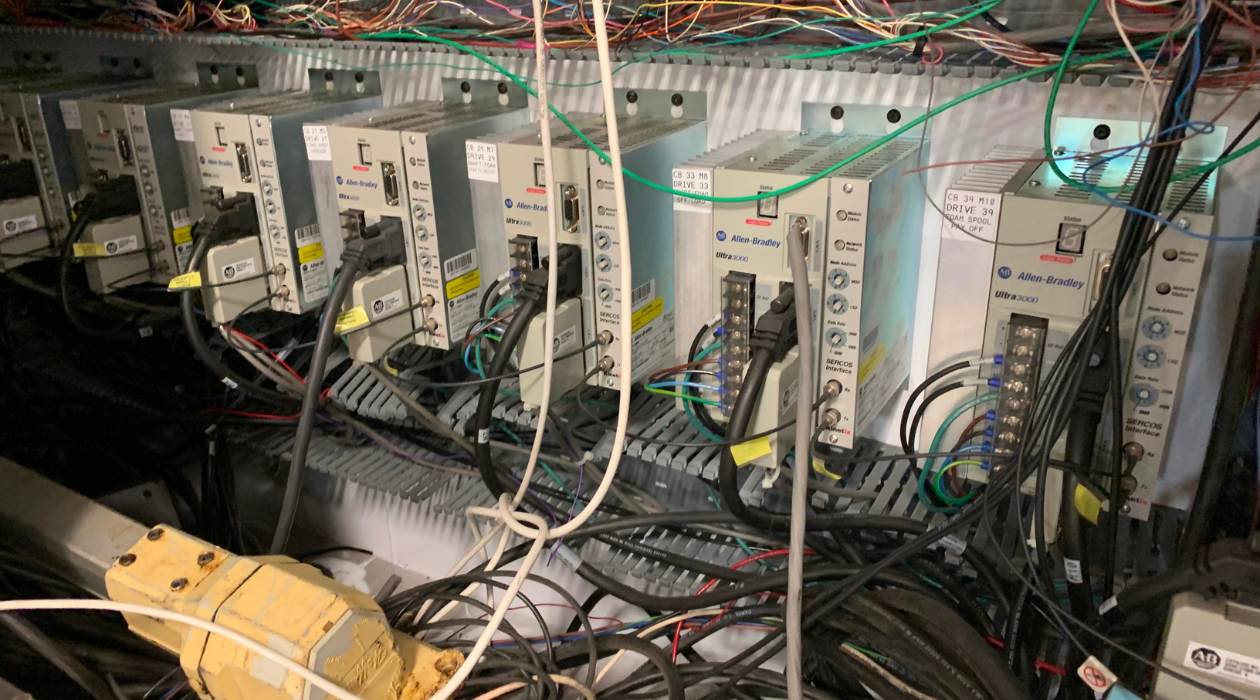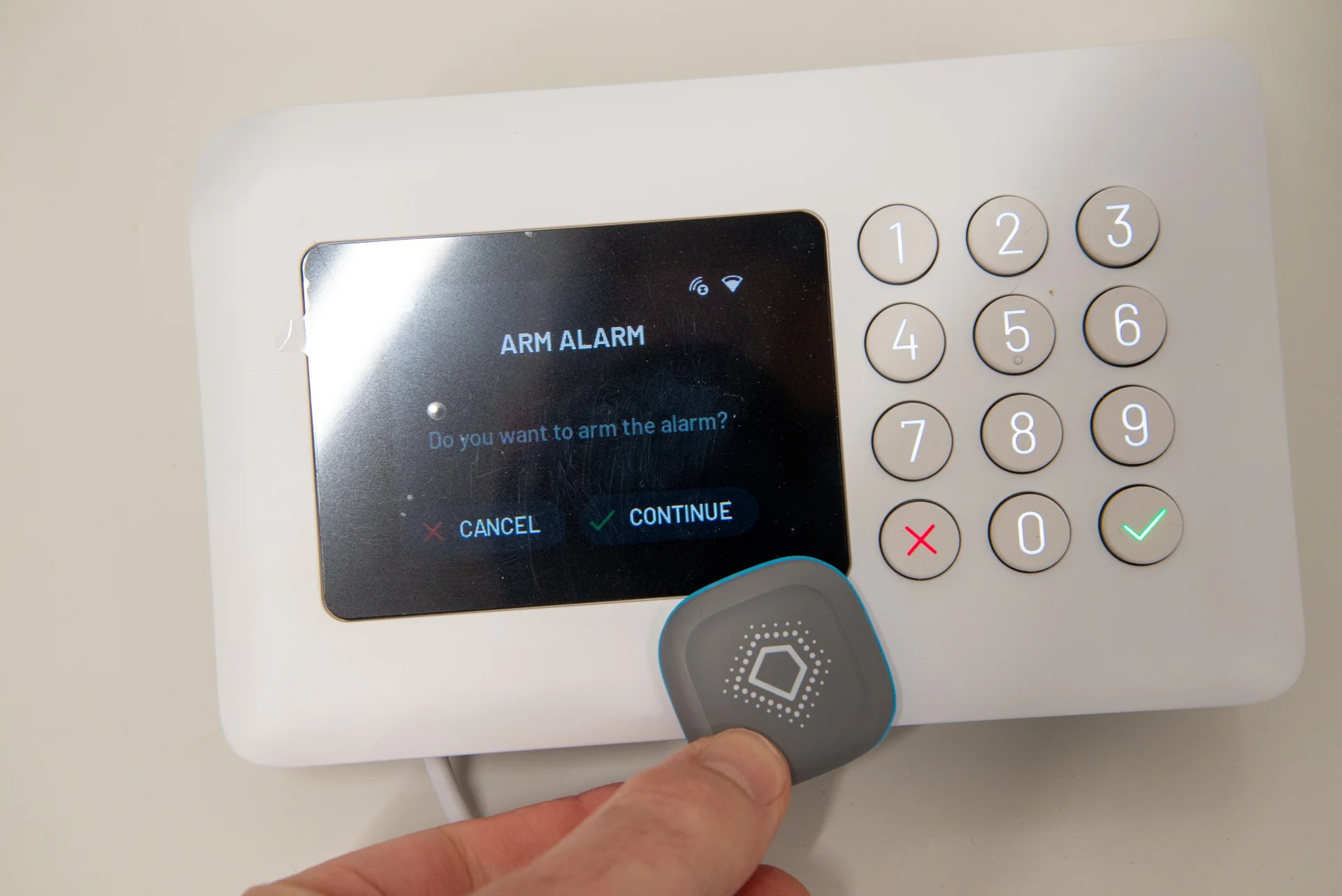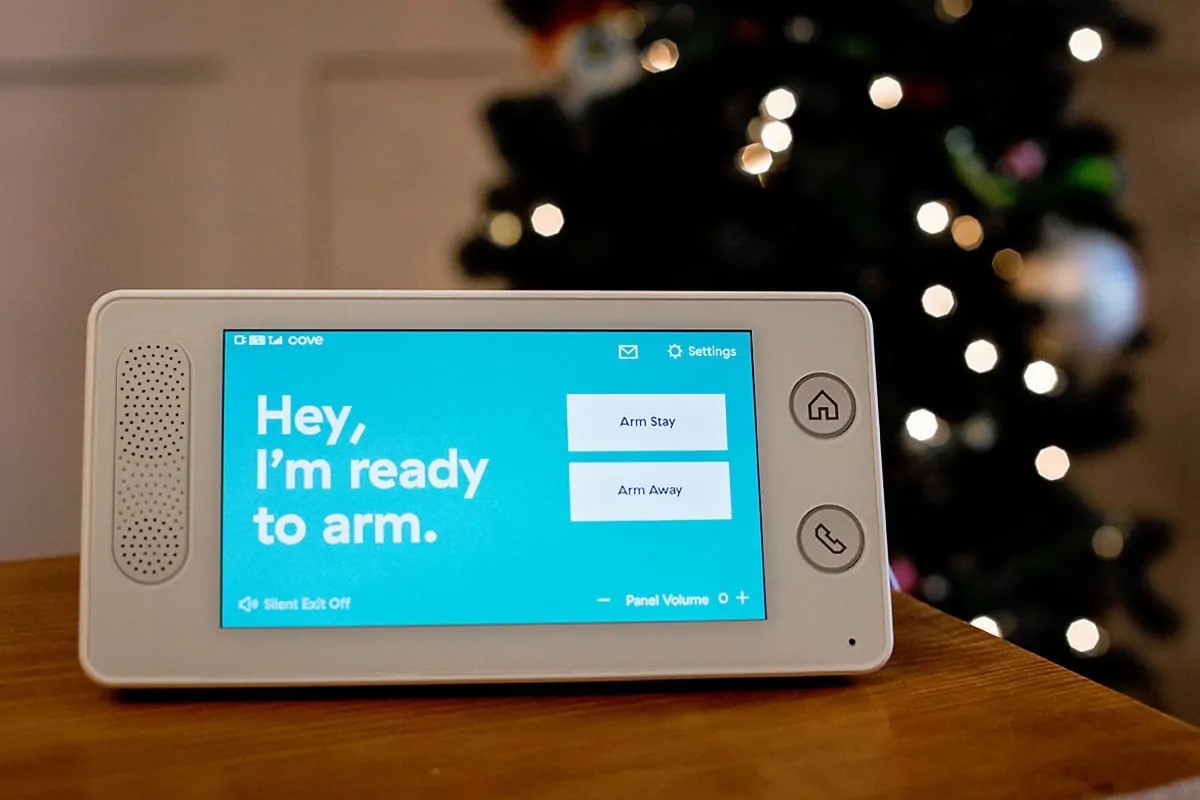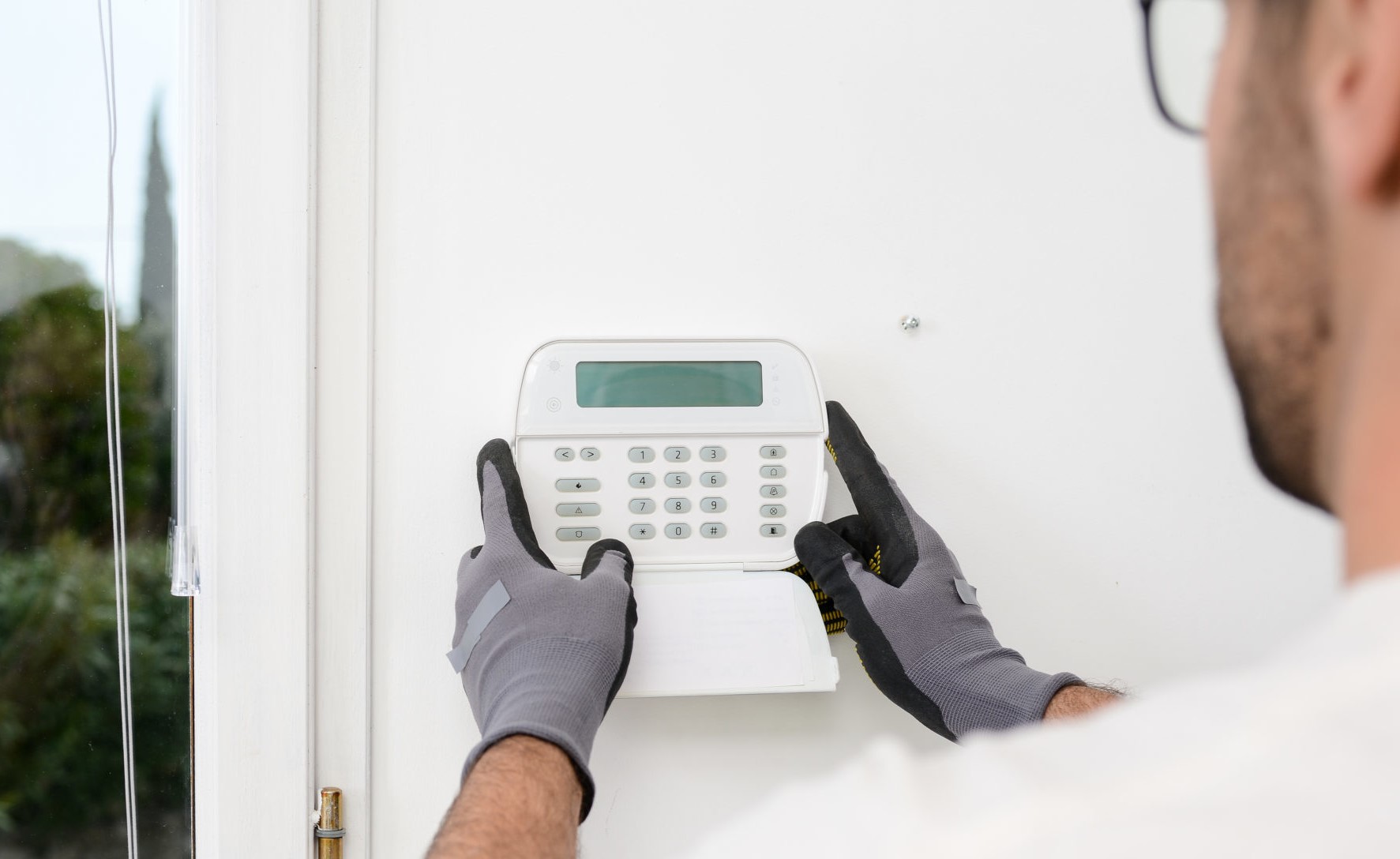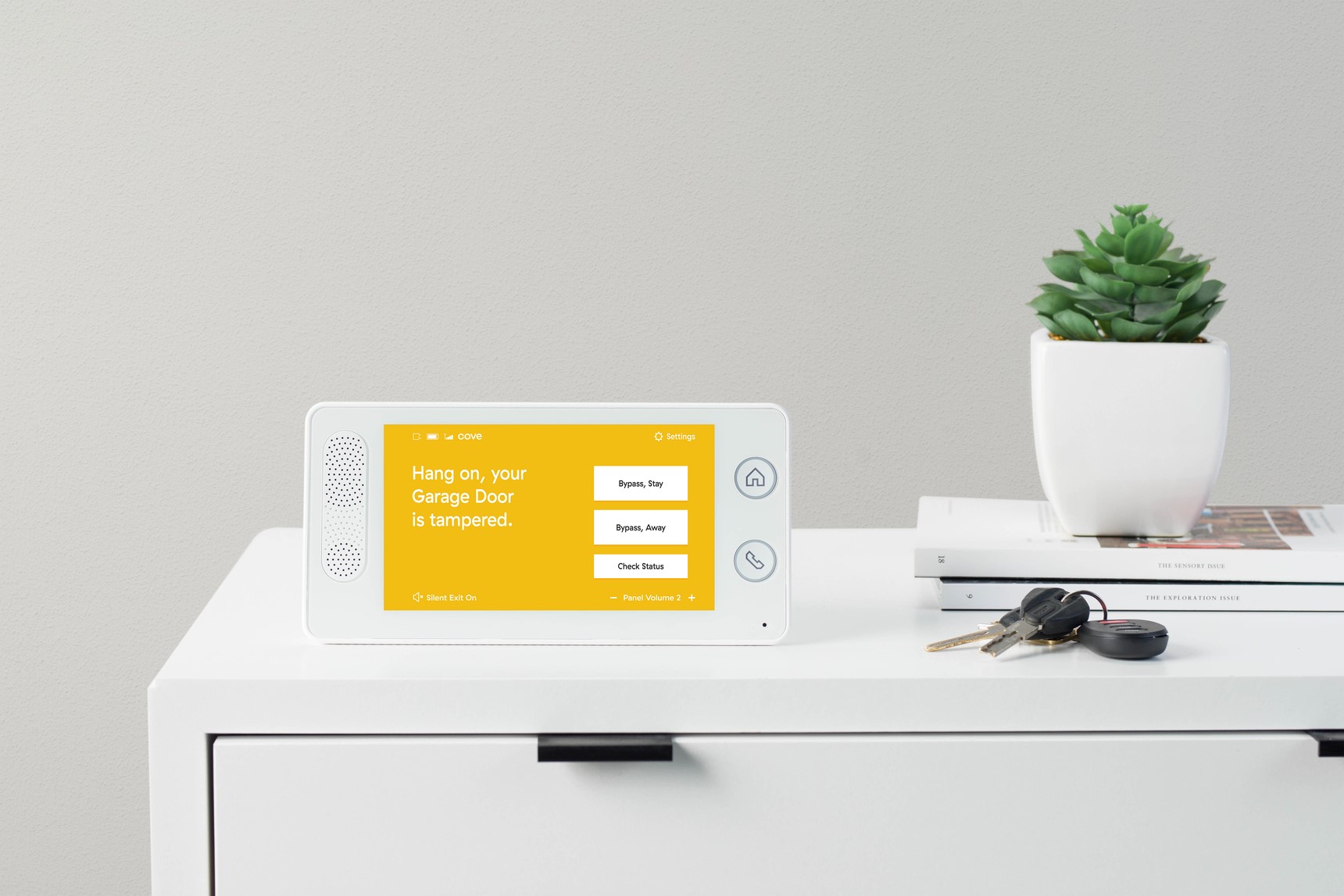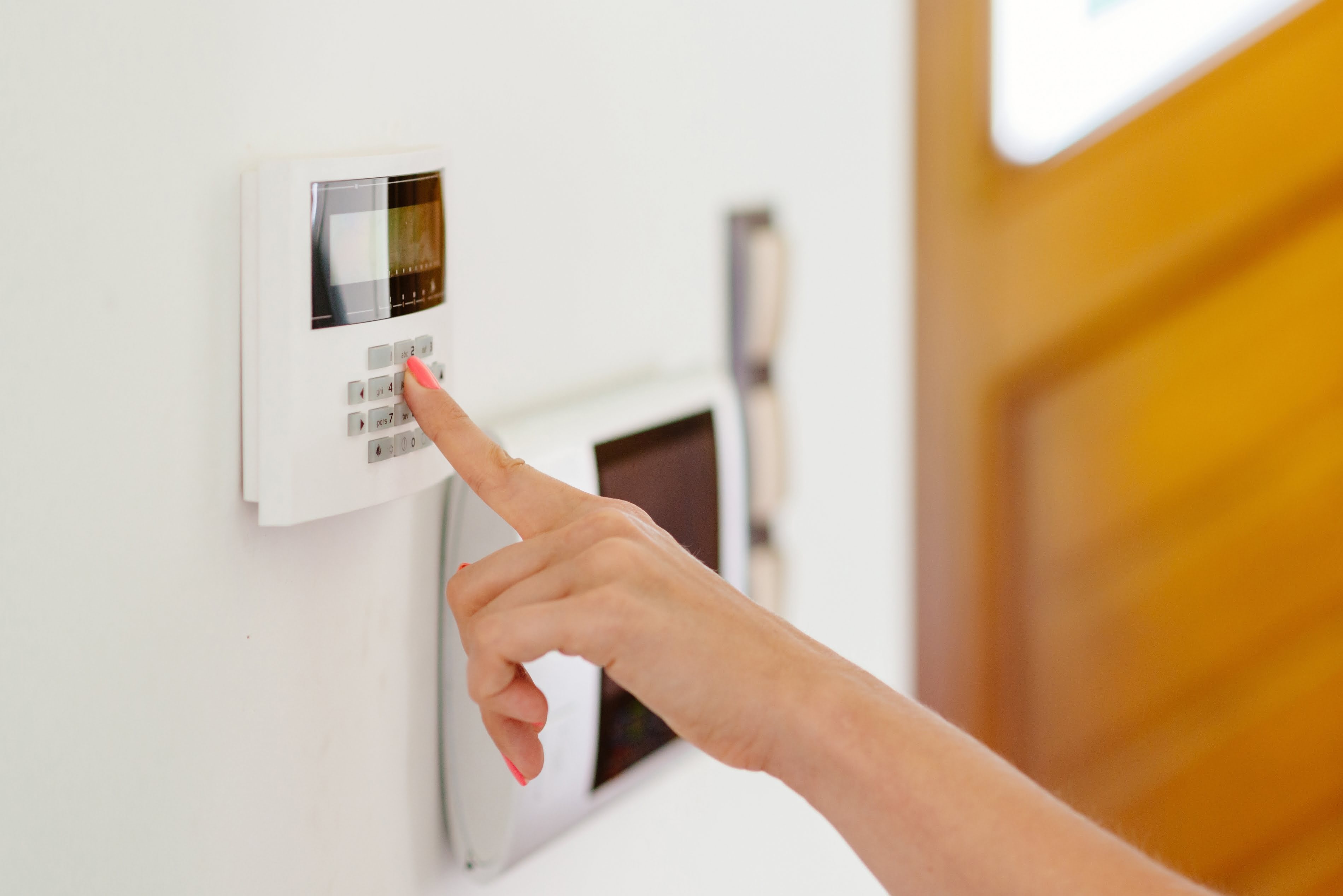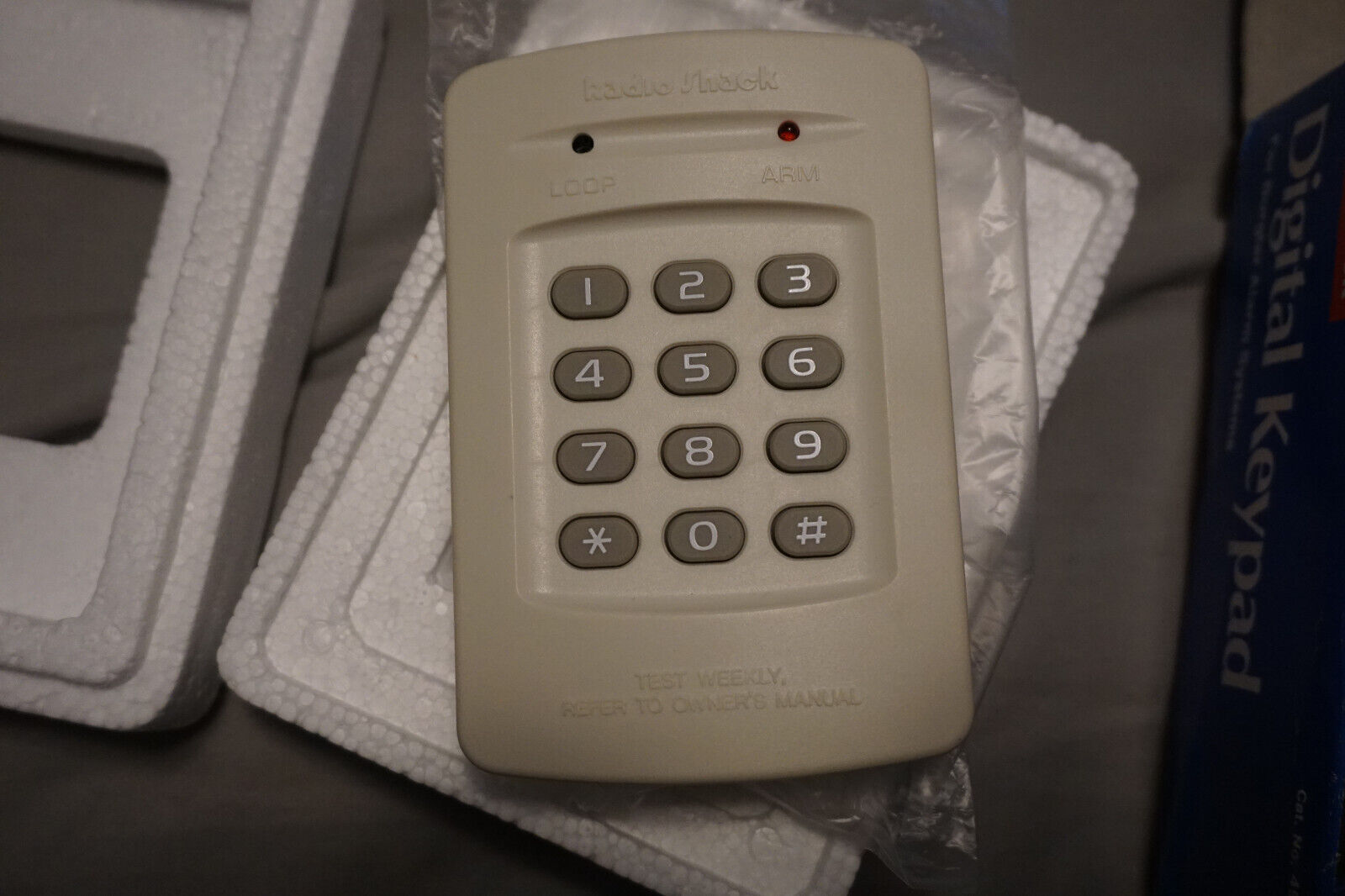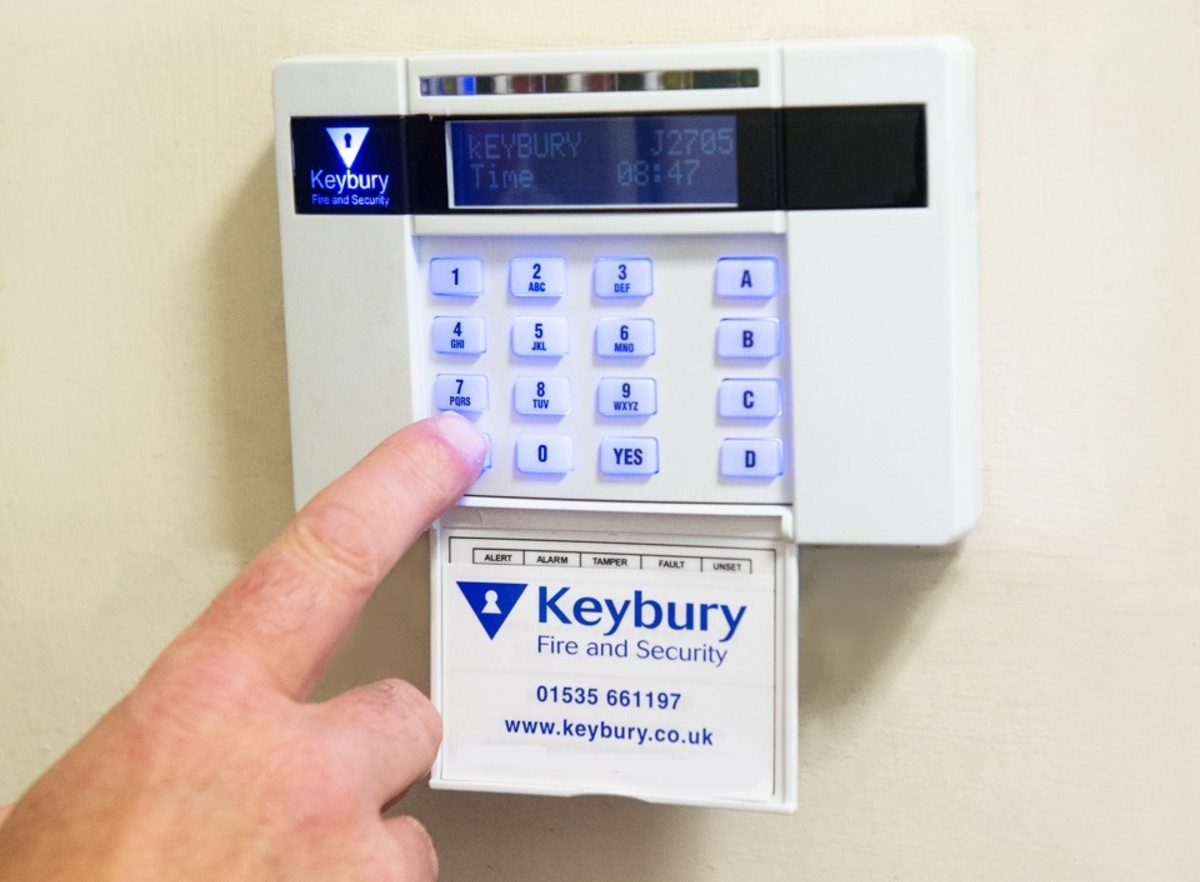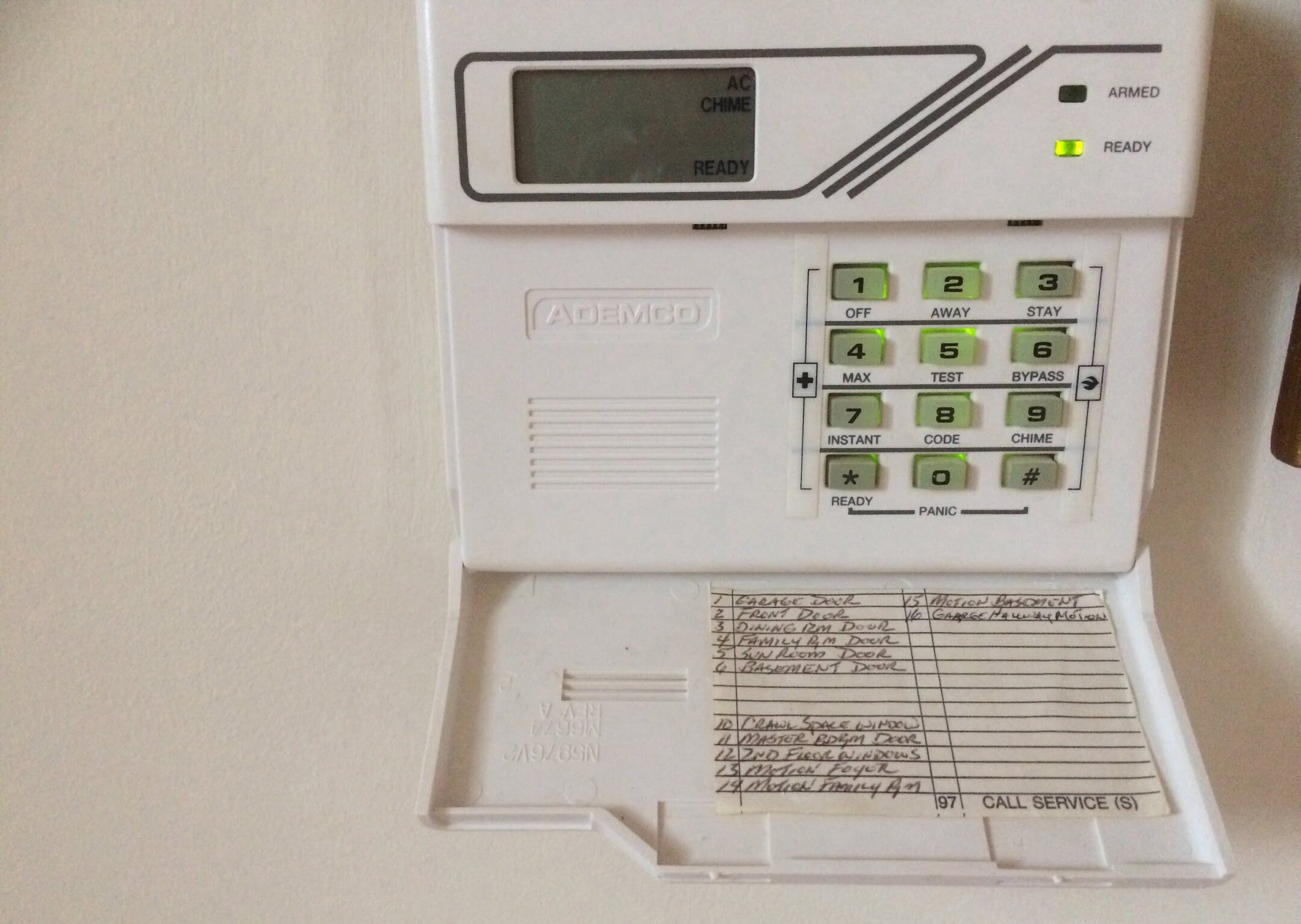Home>Home Security and Surveillance>How Do Alarm Systems Communicate With Monitoring Companies
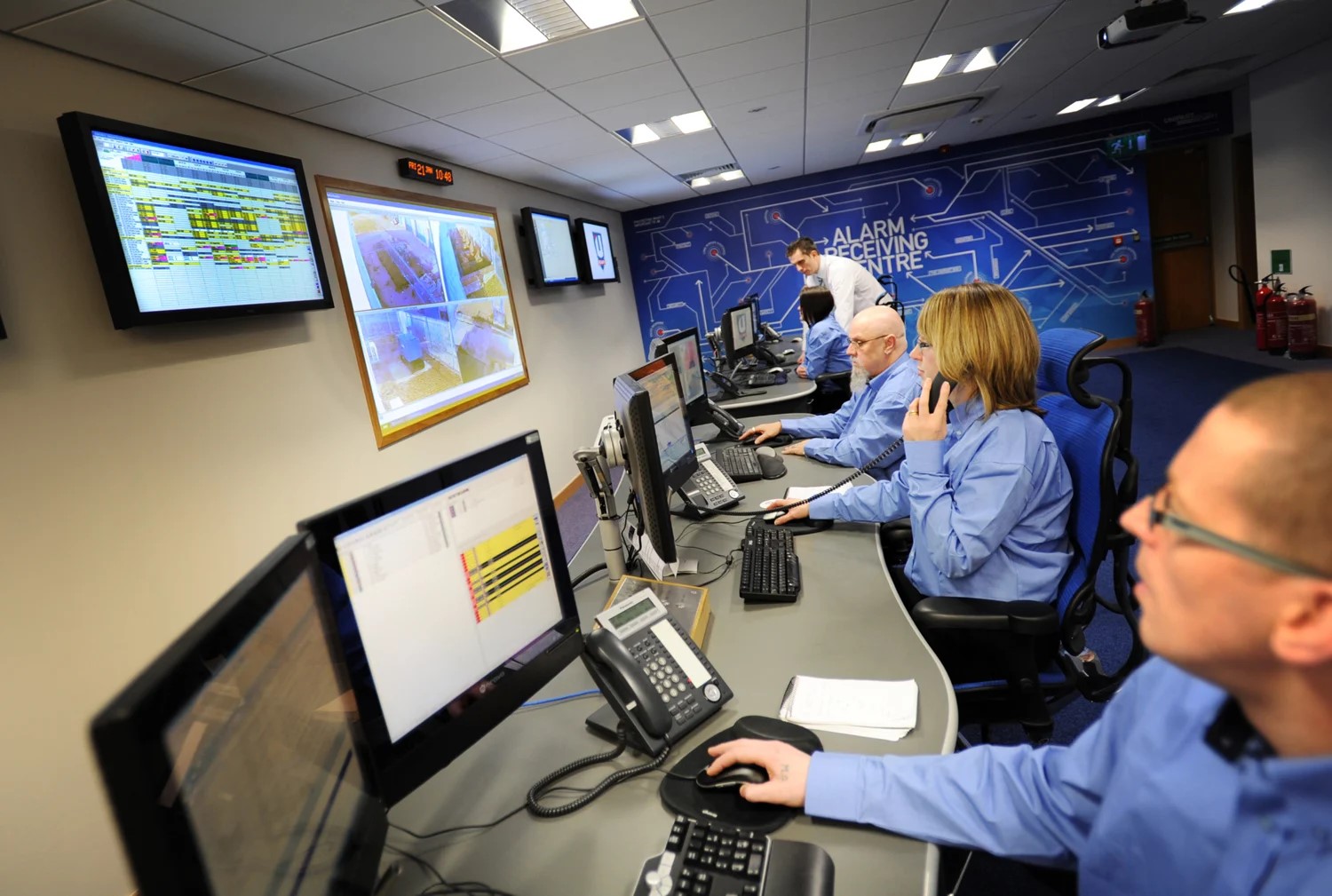

Home Security and Surveillance
How Do Alarm Systems Communicate With Monitoring Companies
Modified: March 6, 2024
Learn how alarm systems use advanced technology to communicate with monitoring companies for home security and surveillance. Discover the benefits and options available.
(Many of the links in this article redirect to a specific reviewed product. Your purchase of these products through affiliate links helps to generate commission for Storables.com, at no extra cost. Learn more)
Introduction
Welcome to the world of home security and surveillance! As technology continues to advance, so does our ability to protect our homes and loved ones. In today’s article, we will be delving into the fascinating topic of how alarm systems communicate with monitoring companies. This crucial aspect ensures that help is dispatched quickly during emergencies, providing peace of mind to homeowners.
The communication methods used by alarm systems have evolved significantly over the years. Gone are the days when landline connections were the only option. With the advent of cellular, internet protocol (IP), radio frequency (RF), and dual-path communication, homeowners now have a plethora of choices to ensure reliable and secure communication with their monitoring companies.
Understanding how these communication methods work will empower you to make informed decisions when it comes to selecting the right alarm system for your home. So, buckle up and let’s dive into the various communication methods used by alarm systems.
Key Takeaways:
- Choose the Right Communication Method
When selecting an alarm system, consider options like landline, cellular, IP, RF, or dual-path communication. Each method offers unique benefits, so choose based on reliability, security, and personal preferences. - Standardized Formats Ensure Efficient Communication
Alarm systems use formats like Contact ID or SIA to transmit signals to monitoring centers. These formats enable quick and structured communication, ensuring that help is dispatched swiftly during emergencies.
Read more: What Is A HVAC Company
Landline Communication
Landline communication is the traditional method used by alarm systems to transmit signals to monitoring companies. It relies on a physical telephone line to establish a connection. When an alarm is triggered, the control panel of the home security system dials the monitoring center’s phone number and transmits the signal through the landline connection.
One of the key advantages of landline communication is its reliability. It is not affected by power outages or network disruptions, as long as the landline connection is intact. This makes it a popular choice for homeowners in areas with unstable cellular or internet connectivity.
However, landline communication also has its limitations. It is vulnerable to tampering, as an intruder could easily cut the physical telephone line to disable the alarm system’s communication. Additionally, since landlines are often shared with other devices like telephones and fax machines, there is a risk of line congestion and delays in transmitting signals to the monitoring center.
With advancements in technology, alarm systems now offer alternative communication methods that offer increased reliability and security. However, landline communication remains a viable option for homeowners who prefer a traditional and dependable approach to home security.
Cellular Communication
Cellular communication has revolutionized the way alarm systems connect with monitoring companies. Instead of relying on a physical landline, cellular communication utilizes a wireless cellular network to transmit signals. This method offers several advantages over traditional landline communication.
One of the key benefits of cellular communication is its reliability. Unlike landlines, cellular networks are less susceptible to outages or line cuts. This ensures that alarm signals are reliably transmitted to the monitoring center, even during power outages or network disruptions.
Cellular communication also provides increased security. Since the signals are transmitted wirelessly, there is no physical line that intruders can tamper with to disable the alarm system’s communication. This makes cellular communication a more secure option for homeowners concerned about potential vulnerabilities with landlines.
In addition to reliability and security, cellular communication offers added convenience. Homeowners can receive real-time alerts and notifications on their smartphones through mobile apps connected to their alarm systems. This allows them to stay updated on the status of their home security, even when they are away.
It is important to note that with cellular communication, homeowners will need to subscribe to a cellular service plan specifically designed for alarm systems. This additional cost should be taken into consideration when selecting this method of communication.
Overall, cellular communication is a popular and modern approach to home security. Its reliability, security, and convenience make it an excellent choice for homeowners seeking a robust and efficient communication method for their alarm systems.
Internet Protocol (IP) Communication
Internet Protocol (IP) communication is another advanced method used by alarm systems to connect with monitoring companies. This method leverages an internet connection to transmit alarm signals and data. IP communication offers numerous benefits that make it a popular choice for homeowners.
One of the key advantages of IP communication is its speed and efficiency. With an internet connection, alarm signals can be transmitted almost instantaneously to the monitoring center. This means that response times in case of emergencies are significantly reduced, ensuring quicker assistance for homeowners.
IP communication also provides increased flexibility and accessibility. Homeowners can remotely access their alarm systems and receive real-time notifications through mobile apps and web interfaces. This allows them to monitor their homes and control their security systems from anywhere in the world with an internet connection.
Security is a critical aspect of any alarm system, and IP communication offers robust encryption and authentication protocols to secure the transmission of data. This helps prevent unauthorized access and ensures the privacy and integrity of alarm system communications.
While IP communication offers many advantages, it is worth noting that it relies heavily on the reliability and stability of the internet connection. Any disruptions or outages in the internet service can impact the communication between the alarm system and the monitoring center. It is essential for homeowners to have a reliable and high-speed internet connection to ensure uninterrupted monitoring and communication.
In summary, IP communication is a modern and efficient method of connecting alarm systems with monitoring companies. Its speed, accessibility, and enhanced security features make it a popular choice for homeowners looking to integrate their alarm systems with their internet-enabled devices and have greater control over their home security.
Radio Frequency (RF) Communication
Radio Frequency (RF) communication is yet another method used by alarm systems to send signals to monitoring companies. This wireless communication method relies on radio waves to transmit data between the alarm system and the monitoring center.
One of the significant advantages of RF communication is its ability to provide a reliable and stable connection. RF signals can penetrate obstacles such as walls and floors, ensuring that alarm signals are transmitted without interruptions. This makes RF communication ideal for large properties or areas with multiple buildings.
RF communication also offers a high level of security. The signals are encrypted, preventing unauthorized access and ensuring that alarm system communications remain private and secure.
Another benefit of RF communication is its flexibility. It allows for easy installation and expansion of the alarm system since it does not require a physical connection to the monitoring center. This makes it a cost-effective option for homeowners who may need to add additional sensors or devices to their existing alarm system.
However, it’s important to note that RF communication has a limited range compared to other communication methods like cellular or IP. The range can vary depending on factors such as the frequency used and potential interference from other devices in the vicinity.
RF communication is commonly used in wireless alarm systems and can be an excellent choice for homeowners who prioritize flexibility, reliability, and security. It provides a wireless solution for home security, allowing for easy installation and expansion without the need for physical connections or reliance on internet or cellular networks.
When choosing an alarm system, consider the communication method it uses to connect with monitoring companies. Look for systems that offer multiple communication options such as landline, cellular, or internet to ensure reliable connection in case of an emergency.
Read more: How Do CPI Wireless Alarm Systems Work
Dual-Path Communication
Dual-Path communication is a hybrid method that combines the advantages of two different communication technologies, typically cellular and internet protocol (IP). It provides an extra layer of reliability and redundancy by utilizing multiple communication paths simultaneously.
In dual-path communication, the alarm system sends signals through both the cellular network and the internet connection. This ensures that even if one communication path fails or experiences disruptions, the alarm signals can still reach the monitoring center through the alternate path.
The use of two communication paths enhances the reliability of the alarm system. It reduces the risk of signal loss or delays in transmission, as the alarm signals can be swiftly rerouted through the available path. This is particularly beneficial in areas with unstable cellular network coverage or intermittent internet connectivity.
Another advantage of dual-path communication is the added security it provides. Each communication path can have its own encryption and authentication protocols, making it harder for potential intruders to intercept or compromise the alarm system’s signals.
By combining cellular and IP communication, dual-path systems offer flexibility in terms of connectivity. Homeowners can benefit from the speed and real-time notifications provided by the cellular network, while also taking advantage of the remote accessibility and control offered by the internet connection.
It is worth noting that dual-path communication may require additional equipment and service subscriptions, which could increase the overall cost of the alarm system. However, the benefits of increased reliability and security make it a worthwhile investment for homeowners seeking a robust and fail-safe communication method.
Overall, dual-path communication is a highly reliable and secure method that provides redundancy and peace of mind for homeowners. By combining the strengths of multiple communication technologies, it ensures that alarm signals can reach the monitoring center efficiently, even in challenging circumstances.
Alarm Signals and Transmission Formats
When an alarm is triggered, it sends a signal to the monitoring company to alert them of the potential threat. The transmission of these alarm signals commonly relies on a specific format to ensure compatibility and effective communication between the alarm system and the monitoring center.
One of the most widely used transmission formats is the Contact ID protocol. It is a standardized format that allows alarm systems to transmit alarm signals in a concise and structured manner. The Contact ID protocol includes various codes and identifiers that convey information about the type of alarm (e.g., burglary, fire, medical emergency), the specific zone or sensor that was triggered, and additional details such as system status and user identification.
An alternative transmission format is the SIA (Security Industry Association) protocol. Similar to Contact ID, the SIA protocol defines a set of codes and identifiers for transmitting alarm signals. The SIA protocol is often utilized in commercial and high-security applications, providing more detailed information about alarms and supporting additional features such as video verification and access control integration.
It’s important to note that these transmission formats are not limited to a specific communication method. Whether the alarm system uses landline, cellular, IP, RF, or dual-path communication, the alarm signals can still be transmitted in the standardized Contact ID or SIA formats.
Additionally, alarm system manufacturers may also develop their own proprietary transmission formats. These formats are specific to the manufacturer and are typically utilized when integrating the alarm system with their monitoring services.
Regardless of the transmission format used, it is crucial for homeowners to ensure compatibility between their alarm system and the monitoring company’s receiving equipment. This ensures that the alarm signals are accurately interpreted and responded to by the monitoring center.
Overall, standardized transmission formats like Contact ID and SIA play a vital role in ensuring effective and efficient communication between alarm systems and monitoring companies. By conveying alarm signals in a structured and uniform manner, these formats enable quick response and appropriate action during emergencies.
Monitoring Center Receiving Equipment
In order to receive and process alarm signals from various alarm systems, monitoring centers are equipped with specialized receiving equipment. This equipment plays a crucial role in ensuring efficient and accurate response to alarm events.
One of the key components of monitoring center receiving equipment is the receiver itself. The receiver is responsible for receiving and decoding alarm signals transmitted by the alarm systems. It is designed to be compatible with different communication methods and transmission formats, allowing for seamless integration with a wide range of alarm systems.
Once the receiver receives the alarm signal, it is then processed by a central monitoring station (CMS) software. This software provides a centralized interface where operators can view and manage incoming alarm signals. It allows them to monitor multiple alarms simultaneously, display relevant information about the alarm event, and take appropriate action based on predefined protocols.
In addition to the receiver and CMS software, monitoring centers also utilize various monitoring and diagnostic tools. These tools help operators efficiently monitor and troubleshoot alarm systems and communication networks. They provide real-time information on the status of the alarm systems, allowing operators to identify and resolve issues promptly.
Another essential component of monitoring center receiving equipment is the backup and redundancy systems. These systems ensure the continuity of operations, even in the event of power outages or equipment failures. Backup power supplies, redundant servers, and alternate communication routes are implemented to minimize downtime and ensure uninterrupted monitoring services.
Furthermore, advanced monitoring centers may employ additional equipment such as video verification systems and advanced analytics software. Video verification systems enable operators to visually verify alarm events through connected surveillance cameras, providing critical information for assessing the situation and dispatching appropriate response. Analytics software offers advanced capabilities such as pattern recognition and predictive analysis, enhancing the monitoring center’s ability to detect potential threats and respond proactively.
Overall, monitoring centers rely on specialized receiving equipment to receive, process, and respond to alarm signals effectively. The combination of receivers, CMS software, monitoring tools, and backup systems ensures reliable and efficient monitoring services, providing homeowners with the peace of mind that their alarm systems are being diligently monitored and responded to.
Conclusion
Choosing the right communication method for your alarm system is essential for ensuring reliable and efficient connection with monitoring companies. With the advancements in technology, homeowners now have a variety of options to consider, each with its own advantages and considerations.
Landline communication offers a traditional and reliable approach, unaffected by power outages or network disruptions. Cellular communication provides increased reliability, security, and real-time notifications through mobile apps. Internet Protocol (IP) communication offers speed, accessibility, and remote control capabilities through internet connectivity. Radio Frequency (RF) communication provides flexibility, reliability, and secure wireless transmissions. Dual-Path communication combines the strengths of cellular and IP communication, offering redundancy and peace of mind.
Furthermore, alarm systems transmit signals using standardized formats such as Contact ID or SIA, ensuring efficient and structured communication with monitoring centers. These alarm signals are received and processed by specialized receiving equipment in the monitoring centers, including receivers, CMS software, monitoring tools, and backup systems.
Ultimately, the choice of communication method and monitoring center receiving equipment depends on factors such as reliability, security, accessibility, and personal preferences. It is important to consider the specific needs and requirements of your home and select a solution that aligns with those needs.
By understanding how alarm systems communicate with monitoring companies and the various options available, you can make an informed decision to protect your home and loved ones. Whether it’s a landline, cellular, IP, RF, or dual-path system, the goal is to ensure that help is dispatched quickly during emergencies, providing you with the peace of mind and security you deserve.
So, take the time to evaluate your options, consult with security professionals, and choose the communication method and monitoring center receiving equipment that best suits your needs. With the right setup, you can rest assured that your home security system is connected and prepared to keep you safe.
Frequently Asked Questions about How Do Alarm Systems Communicate With Monitoring Companies
Was this page helpful?
At Storables.com, we guarantee accurate and reliable information. Our content, validated by Expert Board Contributors, is crafted following stringent Editorial Policies. We're committed to providing you with well-researched, expert-backed insights for all your informational needs.
